Search This Blog
Tuesday, July 31, 2012
Buona Sera Mrs. Campbell (1968)
Monday, July 30, 2012
Hit The Deck (1955)
Sunday, July 29, 2012
Upstairs And Downstairs (1959)
How To Steal A Million (1966)
Saturday, July 28, 2012
Puppet On A Chain (1971)
A narcotics agent (Sven-Bertil Taube) from the U.S. arrives in Holland to find the source of heroin smuggling from Amsterdam to the U.S. But as soon as gets off the plane, his Dutch contact (Drewe Henley) is killed at the airport. Based on the novel by Alastair MacLean (GUNS OF NAVARONE), who also wrote the screenplay, it's a rather routine 70s action thriller. Not quite as clever as it thinks it is, the audience is (or should be) one step ahead of its hero and I had the "twist" figured out about a third into the film. On the plus side is some nice location shooting of the Netherlands and a slam bang motorboat chase through the Amsterdam canals that I suspect influenced the Bayou boat chases that showed up in LIVE AND LET DIE two years later. Directed by Geoffrey Reeve with the boat chase sequence directed by Don Sharp. The pure 70s score is by Piero Piccioni. With Barbara Parkins, Alexander Knox, Patrick Allen and Vladek Sheybal.
The Golden Coach (aka Le Carrosse D'Or) (1952)
In 18th century Peru, a small troupe of Italian actors (commedia dell'arte) arrive to perform in the town's first theater. The troupe's leading actress (Anna Magnani) captures the fancy of the country's Viceroy (Duncan Lamont) who gives her the gift of a golden coach, the result of which plays havoc with her personal life and may be his downfall. Based on a play by Prosper Merimee (perhaps best known for his novel CARMEN which Bizet adapted into an opera), the great director Jean Renoir has whipped up a gorgeous mannered comedy photographed in vibrant three strip Technicolor by Claude Renoir, the director's nephew. Looking at the carefully composed images, one can see the apples didn't fall far from the tree (the director being the son of the famed impressionist Pierre Auguste Renoir). The film ruminates on the actor's life and the fine line between the stage and real life. Of course, one can't imagine the film without the potent presence of Anna Magnani who has the ability to switch from comedienne to tragedienne effortlessly and often in the same scene. The movie was filmed in English, French and Italian but the English version was Renoir's preference. The underscore is an adaptation of Antonio Vivaldi's works. With Paul Campbell and Riccardo Rioli.
Friday, July 27, 2012
Murder A La Mod (1968)
Set in the world of New York indie film making in the 1960s, a young girl (Margo Norton) is involved with a unsavory film maker (Jared Martin) who is currently making screen tests of hopeful actresses taking off their clothes. But a mentally unstable assistant (William Finley, PHANTOM OF THE PARADISE) on the production just may be a psychotic killer. This black comedy was the feature film debut of director Brian De Palma. It comes across as a clever student film by a talented amateur film maker. Accent on "student film" and "talented amateur". But already De Palma's emphasis on style over substance is in the forefront of his film making. The template for this film is clearly Michael Powell's PEEPING TOM with a dash of PSYCHO tossed in but there a few De Palma touches that would again show up in his more mature works like CARRIE and BLOW OUT. Some of the acting is very amateurish especially Margo Norton, whose only film credit this is. Unless you're a fan of De Palma (as I am), you can safely skip this as its interest is only in the formative early work of De Palma. With Andra Akers and Jennifer Salt, who would later co-star in De Palma's SISTERS.
Thursday, July 26, 2012
Belle Starr (1941)
Immediately following the end of the Civil War, a young Southern belle (Gene Tierney) joins forces with an ex-Confederate soldier (Randolph Scott) in waging a guerilla war against all Yankees and Yankee sympathizers. Historically inaccurate in almost every way regarding the real Belle Starr, a notorious thrice married outlaw killed in her 40s, it's one of those films in which we're supposed to sympathize with Southerners who refuse to accept the end of the Civil War and continue fighting against the North. But it's hard to cheer when Scott's white vigilantes chase a family of black "carpetbaggers" out of Missouri or laugh when Scott calls Louise Beavers (as Tierney's mammy) "an Ethiopian elephant". To the film's credit, it does show Tierney's disillusionment with Scott as he becomes more of an ordinary criminal killing and robbing as opposed to a man standing up for his ideals. But anyway you look at it, it leaves a bad taste in one's mouth. Shot in Technicolor by Ernest Palmer and Ray Rennahan with one of Alfred Newman's weakest scores (one theme sounds like Frosty The Snowman. Directed by Irving Cummings (DOWN ARGENTINE WAY). With Dana Andrews, Shepperd Strudwick, Chill Wills and Elizabeth Patterson.
Wednesday, July 25, 2012
Fanny (1961)
Little Giant (1946)
Tuesday, July 24, 2012
Bitter Tea Of General Yen (1933)
A young American girl (Barbara Stanwyck) comes to war torn China, in the midst of a civil war, to marry a missionary (Gavin Gordon). When she is abducted by the Chinese war lord General Yen (the Swedish actor Nils Asther) and taken to his summer palace, she finds herself attracted to him. Both will learn from each other and their lives changed forever. For me, this is Frank Capra's best film. I've never been a fan of his CapraCorn brand of film products like MR. SMITH GOES TO WASHINGTON and IT'S A WONDERFUL LIFE and this dark adult examination of interracial sexual tension seems an anomaly in his career when matched against his best known films. Capra doesn't shy away in portraying the Christian "do gooders" as hypocrites. Ostensibly to save them but barely concealing their contempt for their race. Similarly, in a startling erotic dream sequence, Stanwyck finds herself both repulsed (she sees Asther as a stereotypical sexual barbarian) and attracted (her Caucasian rescuer morphs into Yen) by the Chinese general. The miscegenation angle proved too potent for the film was a failure upon its first release. The lovely discreet score is by W. Franke Harling. With Walter Connolly, Richard Loo and Toshia Mori.
Monday, July 23, 2012
Eyes Of Laura Mars (1978)
A high fashion photographer (Faye Dunaway) has visions of murders as they are happening. But the murder victims are her friends and colleagues and it's only a matter of time until she is the final victim. This glamorous and stylish thriller based on an original story by John Carpenter (HALLOWEEN) and who co-wrote the screenplay is a striking mood piece when it sticks to the thriller aspect but is less successful in the romance department. The romance between Dunaway and Tommy Lee Jones as the police detective investigating the case is sabotaged by some very awkward dialog. Dunaway's wound up neuroticism has never been used to better advantage on the screen. Directed by Irvin Kershner (THE EMPIRE STRIKES BACK) with a nervous verve which give the film its tension. Dunaway's photographs in the film are by Rebecca Blake. The jumpy score by Artie Kane is quite good which can't be said for the awful title song sung by Barbra Streisand. With Raul Julia (he's terrible!), Brad Dourif (excellent), Rene Auberjonois, Darlanne Fluegel, Meg Mundy and Rose Gregorio.
Sunday, July 22, 2012
Red Lights (2012)
Onibaba (1964)
Saturday, July 21, 2012
Gentleman's Agreement (1947)
Recently located to New York, a widowed journalist (Gregory Peck) is assigned a story on anti-Semitism by his magazine publisher (Albert Dekker). After struggling with a fresh approach to the story, he comes up with the idea of passing himself as a Jew in order to feel the effects of anti-Semitism first hand. Though quite daring and brave for its time, today GENTLEMAN'S AGREEMENT comes across as a didactic treatise on anti-Semitism with talking heads crossing every T and dotting every I as if we were unable to grasp the concept of anti-Semitism. Noble intentions indeed but it makes for a very preachy movie. Dorothy McGuire as the New York liberal socialite, who serves as a romantic liaison for Peck, seems created for the sole purpose of showing the hypocrisy of the left who condemn the unfairness of anti-Semitism without actually doing anything about it. Based on the best selling novel by Laura Z. Hobson and directed by Elia Kazan. With John Garfield, Celeste Holm (inexplicably winning an undeserved Oscar for her work here), Anne Revere, Dean Stockwell, Jane Wyatt, Sam Jaffe, June Havoc and Gene Nelson.
The Dark Knight Rises (2012)
When an imposing terrorist (Tom Hardy, INCEPTION) makes plans to destroy Gotham City, reclusive millionaire Bruce Wayne (Christian Bale) is forced to revive his Batman persona after eight years. The final entry in director Christopher Nolan's Batman trilogy is a bloated, ear splitting, often incoherent action extravaganza. While there's no denying parts of it are very effective like the stunning opening sequence which could have been lifted right out of one of the better James Bond films or the impressive destruction of Gotham City by Hardy's character during a football game, the film still feels padded out turning what should have been a whizzy action piece into an inflated epic. It's so ponderous as if every piece of dialog or moment reeked of importance. I didn't hate it (like I did BATMAN BEGINS) and I'm glad I saw it but I doubt it will resonate much beyond its fanatic fanbase. The large cast is largely wasted except for some nice work by Anne Hathaway (never referred to as Catwoman) and Joseph Gordon Levitt (the real movie's "hero"). With Michael Caine, Morgan Freeman, Gary Oldman, Marion Cotillard (very weak), Matthew Modine, Liam Neeson, Cillian Murphy, Tom Conti, Nestor Carbonell, Juno Temple and William Devane.
Jeanne Dielman, 23 Quai Du Commerce, 1080 Bruxelles (1975)
Three days in the structured life of a widow (Delphine Seyrig) and single mother raising her son (Jan Decorte). Running three and a half hours with long stagnant takes and minimal dialogue, there's never been a film quite like it. In meticulous detail and most of the sequences in real time, director Chantal Ackerman documents the mundane daily activities of a housewife. For example, when Seyrig washes dishes, the stationary camera focuses on her back until she washes every dish, when she sits down to eat her supper, Seyrig eats her supper till her plate is clean without the camera cutting away (I hope she didn't have to do more than one take!), she makes veal cutlets and meat loaf before our very eyes, makes beds, knits, takes a bath etc. As the film begins, the tendency is to suspect self indulgence on the part of the film maker but slowly and before you realize it, it becomes compelling cinema. It's a testament to Seyrig's commanding screen presence that she's able to hold the camera for three and a half hours. I suppose some see a profundity of sorts in the film. I'm not sure I do and I'm not sure I'd care to see other film makers usurp this style but there's no denying this is a unique and pioneering film. The film's biggest mystery: Just what is that outside light that strobes the dining room?
Friday, July 20, 2012
Carry On Admiral (aka The Ship Was Loaded) (1957)
Thursday, July 19, 2012
You're A Big Boy Now (1966)
A Day At The Races (1937)
With her sanitarium in deep financial trouble, the young owner (Maureen O'Sullivan) hires a medical quack (Groucho Marx) in the hopes that her richest patient (Margaret Dumont) will help her out. The Marx Brothers follow up to their A NIGHT AT THE OPERA, also directed by Sam Wood, is more amusing than not. Still, like OPERA, we have to put up with Allan Jones's bellowing as well as ballet production numbers and Chico Marx's piano concertos which serves to pad out the film to an almost two hour running time. Some of the comedy routines are milked till there isn't a drop left. An elongated routine at the race track with Chico tricking Groucho into buying race track tips is funny the first two times but by the fifth time, it's worn out it's welcome. There is an amusing medical examination of Margaret Dumont though. As always, thank heaven for Groucho whose comic timing is impeccable and compensates for the often annoying "cuteness" of Chico and Harpo. With Douglass Dumbrille, Sig Ruman and Esther Muir.
Wednesday, July 18, 2012
Goodbye Gemini (1970)
It's London in the swinging sixties and a pair of kinky and amoral twins (Martin Potter of FELLINI SATYRICON, Judy Geeson) with incestuous leanings live in their own world, shutting out everyone else. But when a sleazy pimp (Alexis Kanner in the film's best performance) invades their world, it starts spinning out of control. The film is a curio of its time and on that level, it's highly watchable. As anything else, it's a messy homicidal variant of LES ENFANTS TERRIBLE and no, that's not a recommendation. Based on the novel ASK AGAMEMNON by Jenni Hall, the twins are too creepy to invest any empathy in and they're not interesting enough to make us care. Directed by Alan Gibson. There's a nice enough score by Christopher Gunning (LA VIE EN ROSE) peppered with 60s pop and Geoffrey Unsworth (CABARET) did the cinematography. With Michael Redgrave and Freddie Jones.
Camille (1921)
Shake Hands With The Devil (1959)
Tuesday, July 17, 2012
The Lady Vanishes (1979)
Born To Be Bad (1950)
Sunday, July 15, 2012
Katy Perry: Part Of Me (2012)
Part biography, part concert movie, the film follows pop singer Katy Perry on her 2011 Teenage Dream world tour which proves a massive success playing to sold out arenas ... meanwhile her personal life deteriorates as her marriage to Russell Brand falls apart. One's enjoyment of the film is based on one's like of Katy Perry. If you're not a fan, you're probably not even reading this, much less interested in the movie itself. As for me, I'm a fan of Perry's irresistible catchy pop tunes like I Kissed A Girl, Hot N Cold and Firework, appealing personality and legitimate pop voice (the gal could do Broadway without a problem) so I had a fun time at it. Once again, 3D is foisted upon us when it adds nothing to the project except in some of the concert footage. Perhaps the most interesting aspect of the documentary portion is Perry's upbringing as a Pentecostal Christian and early career as a gospel singer and her breaking away from the restrictions of that life. Directed by Dan Cutforth and Jane Lipsitz.
Sommarlek (aka Summer Interlude) (1951)
The Clouded Yellow (1950)
Saturday, July 14, 2012
Il Viaggio (aka The Voyage) (1974)
Friday, July 13, 2012
Baby The Rain Must Fall (1965)
If Winter Comes (1947)
Thursday, July 12, 2012
The Crucifer Of Blood (1991)
Flareup (1969)
Wednesday, July 11, 2012
Drum Beat (1954)
Tuesday, July 10, 2012
Anna Christie (1930)
A young girl (Greta Garbo), recovering from an undisclosed illness, reunites with the sea going father (George F. Marion, recreating his original stage role) she hasn't seen in 15 years. A burly sailor (Charles Bickford) falls for her. But she keeps her secret past as a prostitute from both men. Based on the Eugene O'Neill play, this was Garbo's first talking picture. She has one of the great film introductions of all time, "Gimme a whiskey, ginger ale on the side and don't be stingy, baby!". Alas, nothing that follows equals that iconic moment. Directed by the usually adept Clarence Brown (NATIONAL VELVET), it's a stilted piece of movie making barely disguising its theatrical roots. I'm not even sure it's one of O'Neill's best plays. Even Garbo seems unsure though she becomes vibrantly alive in her big scene where tells off her father and her lover. With the great Marie Dressler as a boozy waterfront tramp, stealing whole scenes effortlessly.
The Young Land (1959)
Sunday, July 8, 2012
The Lineup (1958)
Papirosnitsa Ot Mosselproma (aka Cigarette Girl From Mosselprom) (1924)
Saturday, July 7, 2012
Master Of The Game (1984)
Tales That Witness Madness (1973)
The head doctor (Donald Pleasence) in a modern asylum for the insane takes a colleague (Jack Hawkins) on a tour. Of specific interest are four patients: a child (Russell Lewis) with an imaginary tiger for a friend which distresses his parents (Georgia Brown, Donald Houston). An antiques dealer (Peter McEnery) who inherits a unicycle that time travels to the past. A man (Michael Jayston, NICHOLAS AND ALEXANDRA) who falls in love with a tree much to the consternation of his jealous wife (Joan Collins). A literary agent (Kim Novak) who throws a Hawaiian luau that results in a gruesome payoff. This horror film was one of several portmanteau films popular in the 60s and 70s, usually produced by Amicus. Directed by the Oscar winning cinematographer Freddie Francis, this is one of the better horror anthology films of the era. While the first two segments are rather predictable, the last two (the Jayston and Novak episodes) are quite magnetic. With Suzy Kendall, Mary Tamm (THE ODESSSA FILE) and Michael Petrovitch.
The Witches Of Eastwick (1987)
In the New England town of Eastwick, three women: a widow (Cher), a divorcee (Susan Sarandon) and a single mother (Michelle Pfeiffer) with six children, are dissatisfied with their humdrum single lives. When a mysterious stranger (Jack Nicholson) arrives in town and buys an historical mansion, he makes the women aware of their magical prowess. While those attached to the John Updike novel that served as the source material will be understandably resentful, the film takes a different tact. It's an impudently entertaining, especially the film's first two thirds, dark comedy. At his best, there always seemed to be a bit of the devil in Nicholson's characters and performances. Here, finally, he can let it all loose as the Devil. Talk about born to play a certain role, Nicholson seems to know it and having a devilishly good time doing it. Fortunately, the three lead actresses are strong enough not to let Nicholson completely take over. If the film's last act seems rather desperate, it's not enough to dampen one's overall impression. There's a fourth witch, a neurotic Puritan, played by Veronica Cartwright that comes pretty close to stealing the film. The Oscar nominated underscore is by John Williams and it's a beauty. Directed by George Miller (THE ROAD WARRIOR). With Richard Jenkins, Keith Jochim and Carel Struycken.
Friday, July 6, 2012
El Secreto De Sus Ojos (aka The Secret In Their Eyes) (2009)
A former and now retired legal counselor (Ricardo Darin) attempts to write a novel based on a brutal rape and murder case that he was involved in 25 years ago, a case where justice was never fully completed. He assists the help of a judge (Soledad Villamil), who he's always been in love with, for her advice. But the writing of the novel brings back painful memories of love, political corruption and eventually ... a promise fulfilled. The winner of the 2009 best foreign language Oscar (it's from Argentina), this is an impressive film. It sneaks up on you because it starts off as a mystery as authorities attempt to track down a killer but slowly reveals itself to be more than a thriller as it imparts an almost melancholy characteristic as the protagonist's search goes beyond finding a murderer. It's title is apt and that "secret" in the eyes provides more than just one clue. Directed by Juan Jose Campanella who co-wrote the screenplay with Eduardo Sacheri, who wrote the novel the film is based on. With fine supporting work from Pablo Rago as the murder victim's husband and Guillermo Francella as Darin's alcoholic confidante.
Sea Of Grass (1947)
In the 1880s, a young St. Louis woman (Katharine Hepburn) travels West to marry a cattle baron (Spencer Tracy). But after their marriage, she has trouble adjusting to his way of life and his love of the land which she feels takes precedence over her. The idea of Tracy and Hepburn directed in a western by the great director Elia Kazan sounds intriguingly full of promise. Who would have thought that we would end up with this soggy piece of claptrap? We can see as soon as she arrives in New Mexico, they’ll eventually clash and the film offers no surprises. Based on the novel by Conrad Richter (though there have been major changes in its transition to screen), the film has the ambitions of an Edna Ferber generational epic along the lines of a GIANT or CIMARRON but Kazan‘s lack of interest is obvious. He needs the melodramatic punch he brought to EAST OF EDEN. No one is at their best here and I think most everyone would agree that it‘s the weakest of the Tracy/Hepburn collaborations. Kazan, on the other hand, has done worse. There‘s a rich underscore by Herbert Stothart. With Robert Walker (third billed but he doesn‘t show up till the film‘s last half hour), Melvyn Douglas, Phyllis Thaxter, Edgar Buchanan, Robert Armstrong and Harry Carey.
Thursday, July 5, 2012
Cul De Sac (1966)
Wednesday, July 4, 2012
Victor Victoria (1982)
In 1934 Paris, an impoverished young soprano (Julie Andrews in an Oscar nominated performance) is talked into passing herself off as a man, who is a female impersonator, by a gay nightclub performer (Robert Preston). When she becomes the toast of Paris as "Victor", complications arise when she finds herself attracted to an American mobster (James Garner). This Blake Edwards directed sophisticated, elegant and witty musical farce is a jewel that can stand next to the cream of Lubitsch or Wilder. Everyone seems to be working at the top of their game, whether it be the impressive production design, art and set direction, costumes, the handsome Panavision lensing by Dick Bush (TOMMY) or the near perfect songs of Henry Mancini and Leslie Bricusse. Andrews has never been better, Garner has but two supporting performances dominate the film. Preston's casual aging cabaret performer and Lesley Ann Warren's (whose performance owes a lot to Judy Holliday's Billie Dawn) shrill gangster moll, both Oscar nominated. Based on the 1933 German film, VIKTOR UND VIKTORIA. With Alex Karras, John Rhys Davies and Graham Stark whose deadpan waiter steals scenes.
Tuesday, July 3, 2012
Treasure Island (1990)
The Unfaithful (1947)
Sunday, July 1, 2012
Beasts Of The Southern Wild (2012)
The Good Night (2007)
Subscribe to:
Posts (Atom)
.JPG)
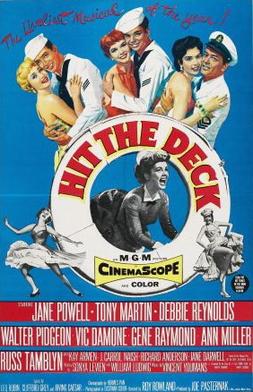


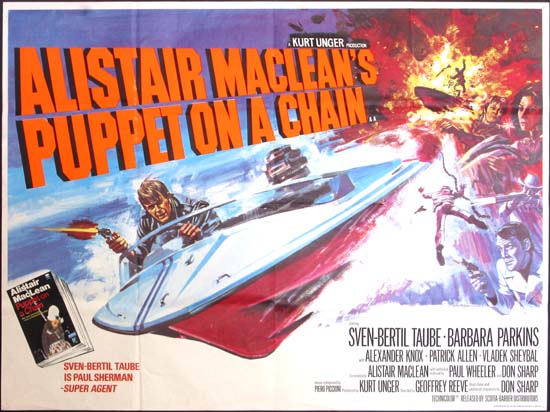

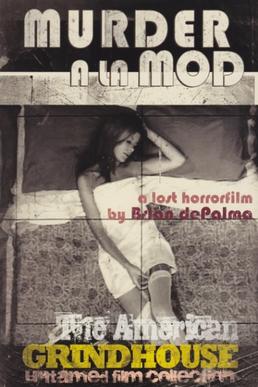
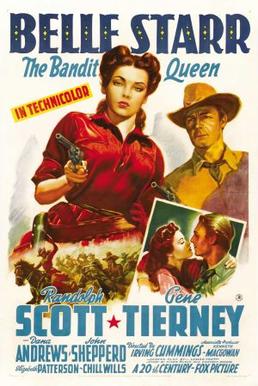
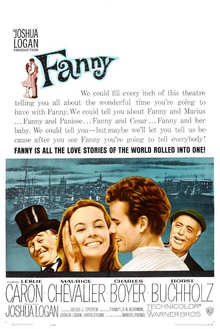








.png)

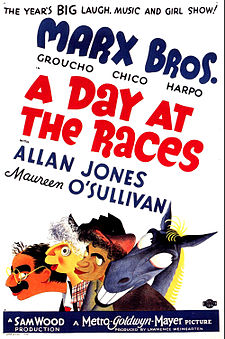


.JPG)
.JPG)
_cinema_poster.jpg)





.JPG)








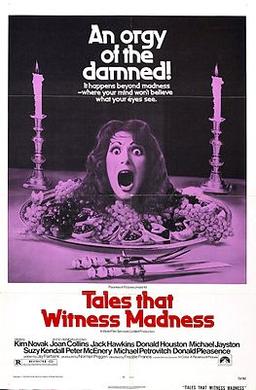
.JPG)



.jpg)

.JPG)

